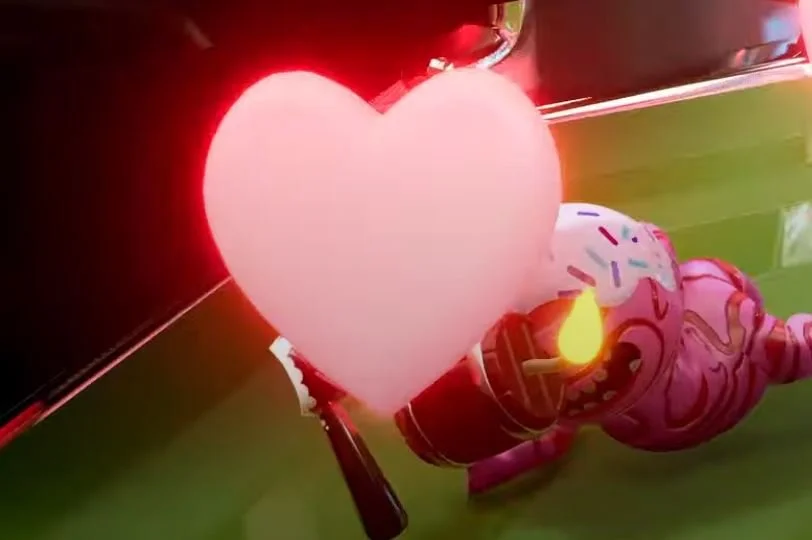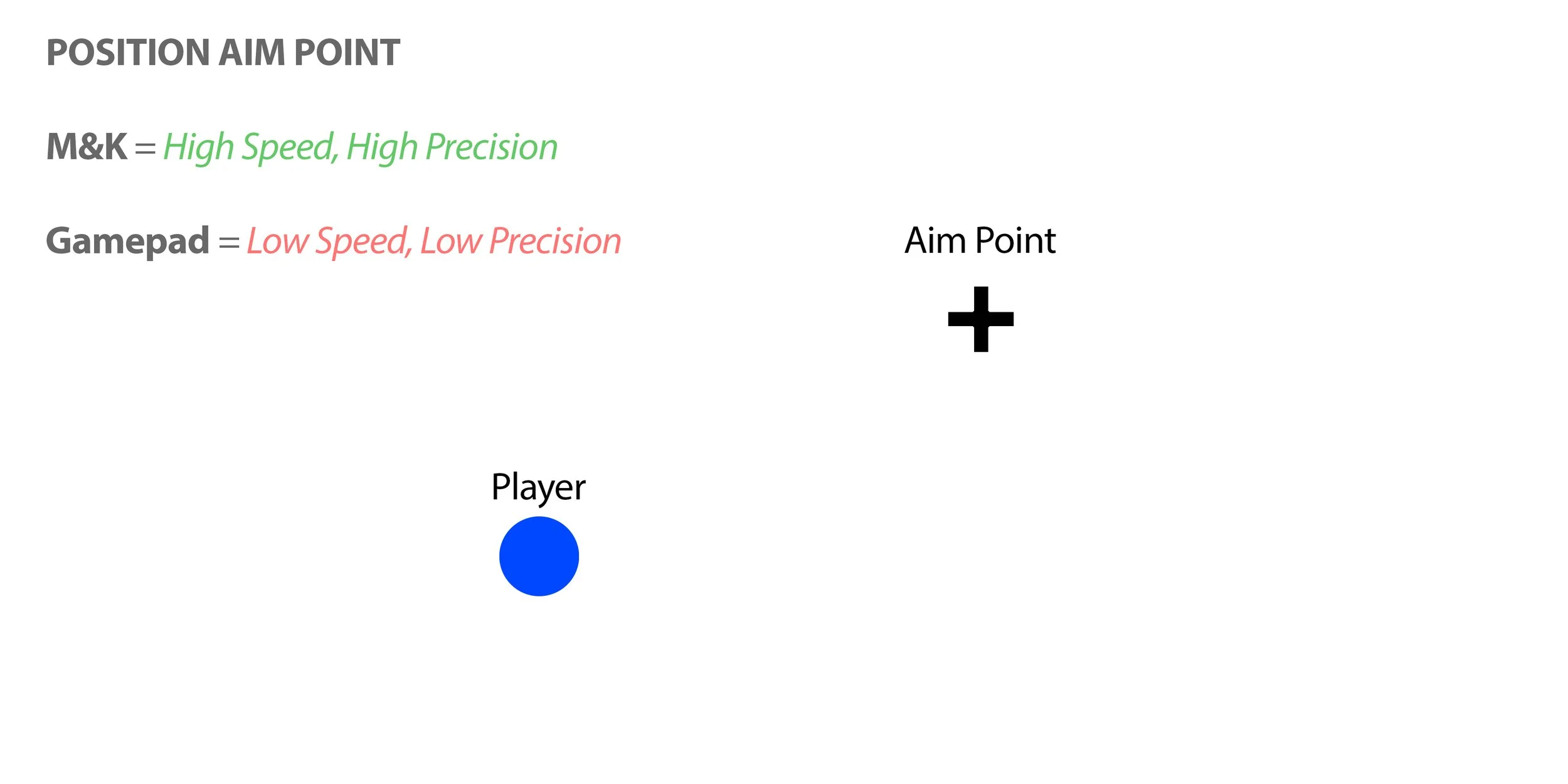Outcasters
I was brought onto Outcasters post-concept.
Unique Selling Points like the Curve Shot were locked down but there were still areas of improvement, particularly around a dominant strategy and stagnant gameplay, I identified and resolved prior to launch as well as iteration directly with Stadia on gamepad support.
Health Drops & Player Engagement
One major issue I tackled was how unrewarded and even punished the player was for engaging with the core gameplay.
For context, Outcasters is a 2 minute Battle Royale (BR). In a typical BR framework players are encouraged to explore for elements that improve their chances of winning (weapons, armor, etc), placing them in conflict with other players. If they survive these encounters, their chance of winning increases as there is one less player and they can loot them for additional resources.
Outcasters did not have any systems to create this engagement. Encounters often ended negative-sum, one player died and the other lost health. As a result, a dominant strategy emerged in which players would avoid contact to conserve their health thereby having the best chance to win. It was possible to win games without ever firing a shot.
The first step to resolving this was designing and introducing a way for players to restore their health, Health Drops. When eliminated, a player would drop a pick-up that would restore one health when collected. This was also able to take the player above their starting health, rewarding players for skilled play and placing them in a better position to win long term.
The benefits were immediate. Players were now engaging each other far more frequently and earlier in matches and more skilled players felt like they had a method to improve their chances of winning. It also made 3+ player engagements far more interesting. Now you didn’t want to eliminate enemies too close to one another otherwise they could collect the health drop. Likewise, health drops functioned as powerful attractors in duels are everyone knew that players would move to collect them. This allowed players to play mind games with the curve shot and their abilities. Trying to predict where an enemy may be moving to when they both want the health.
Attack Combo System
Even after the health improvements above, the experience lacked an element that would provide some variety and longevity to gameplay, particularly for the more casual audience we were targeting. Apart from the level changing between rounds, most matches played out the same way:
Match start.
Search for player.
Win/Lose Encounter, Gain/Lose Health.
Not only was this repetitive, but it placed a high focus on hard skills in order to succeed. There were no other axes of differentiation for players so we were effectively making a top-down twitch shooter. This was most evident in playtesting where the most skilled player tended to win the most rounds.
To shift the product more in the intended direction I redesigned our Power-Up system into the Attack Combo system, the goals of which were 3-fold:
Provide players with more variety and decision-making during a session.
To add emergent narrative to each game round.
Provide a balancing axis for skill that would help reduce the differential between player skill vs success.
The final design we shipped with was:
Players had 3 upgrade slots for their attack.
Random power-ups would spawn around the map.
When collected, these power-ups would modify the behavior of the player’s attack.
These effects stacked if the same power-ups were collected.
After testing and iteration, this system became a game unto itself, meeting our goals in an efficient timeframe.
Players now had options at the beginning of a match.
Search for enemies & health.
Search for their desired power-up.
During a match, the power-ups created a narrative for the player, posing meaningful decisions:
I have 2 of a power-up, do I try and find a 3rd? Or do I pick up something else to diversify my attack?
How do I make the most of the power-ups I’ve found?
By analytics, the winner of each match was now far less determined by skill.
Gamepad Implementation
Due to a late pivot, it became necessary for gamepad to become the primary input method for Outcasters.
This was problematic as the core mechanic of the game, the curve shot, had been designed with mouse & keyboard (M&K) as the primary input.
We went through several iterations, focussing on how we could make rapidly curving shots feel accurate and responsive on a gamepad.
I began to work my way through this, tuning existing variables and applying aim assistance principles like Fitts Law to improve the player experience.
For selecting the aim point:
We initially tried an extreme option of directly mapping the position of the thumbstick to an area around the player. This made aiming significantly more responsive but also incredibly tiresome.
Our final implementation was a suite of cursor speed/acceleration options as well as an aim friction assist. These were all exposed in settings for individual tuning.
We also added a target snap to the aim point so that if the player started aiming near a player, their aim point would track them as they moved. This sounds counter-intuitive given you want to be aiming where the player is going rather than where they are, but due to the curve shot you could still predict and shoot your opponent.
For setting the curve direction and intensity:
For curving we drastically increased the aim speed as once players had locked onto a target, they had a tendency to flick the stick to curve their shots. There often wasn’t time to drive a curve point around accurately and the snap assist meant the shot was always going at least close to the target.
Release to fire.
Remained the same.
Reposition aim point to fire again.
This was a remarkably simple fix. We simply placed the player’s aim point back at the original aim location after curving (we gave players the option to disable this if they wished). Combined with the snap assist, gamepad players were now able to rapidly fire at a target once they had locked onto it the same way a mouse player could.
After the above went into the build, it was still evident that M&K users had an advantage at long range, but engagements were far more even at mid-range and due to the aim assistance, Gamepad users tended to have an advantage at close range. This was also when we first started seeing Gamepad users regularly winning rounds.














